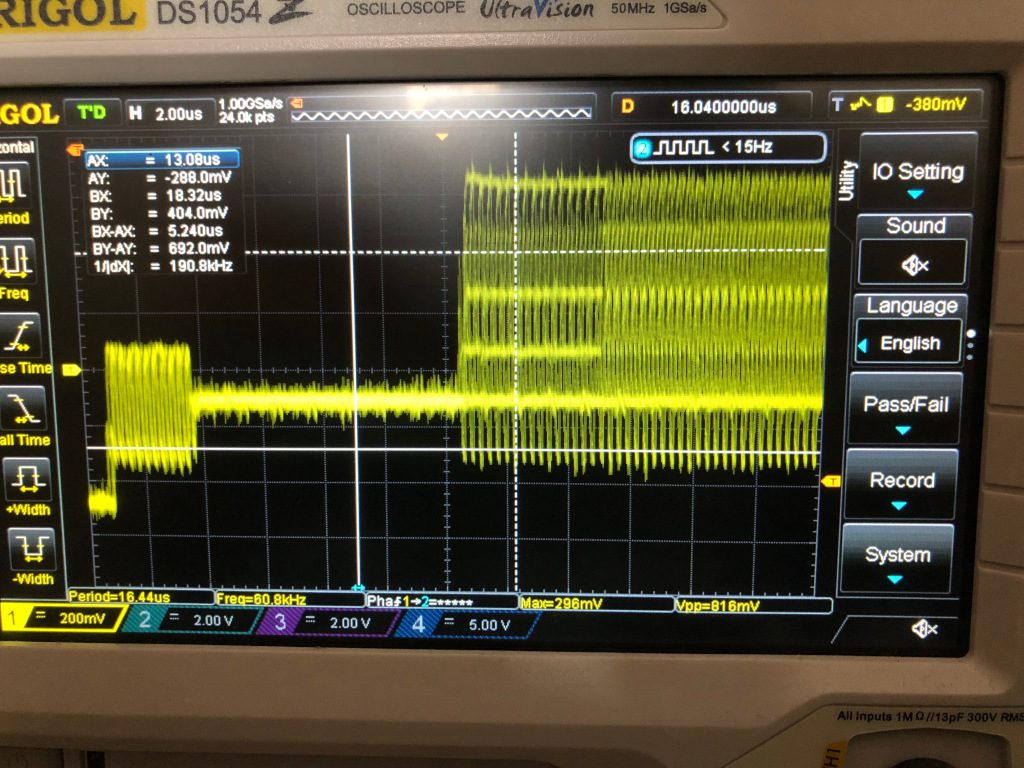Tandy Colour Computer 3 Composite Video
The GIME appears to generate its composite output (used in NTSC machines only) by switching between a set of 7 voltages at 7.16Mhz (to create cycles of 3.58MHz), presumably with R/C net to smooth to almost-but-not-quite sine waves. AFAICT there is no black level separate to blank (which would be usual for an NTSC signal).
The grey and colour luminances are different at each intensity because there is no output voltage corresponding to the luminance of colour output: it is simply the average of the high and low voltages used to form the colour signal.
The colour amplitude is similar for intensity levels 0-2, but reduced for intensity 3, leading to less saturated colour.
Monochrome output (bit 4 of VMODE register at $FF98) only affects composite, and as well as removing the colourburst, will only emit the grey level for each intensity; TVs don't immediately (or ever) switch to mono just because the colourburst is missing.
Observed on a scope, there is a larger jump in phase between hues 11 and 12 than between any other adjacent hues (including between 1 and 15). This supports the theory that the colour phase is a simple offset counted in GIME clock edges, with a gap as there are 16 edges in one colour cycle, and only 15 hues.
Approximate measured voltages (at composite video port, relative to blank):
| ID | V | Notes |
|---|---|---|
| VSYNC | -0.35 | |
| VBL | -0.21 | burst low peak, colour0 low peak |
| V0 | 0.00 | blank, grey0 (black), colour1 low peak |
| V1 | 0.17 | grey1, colour2 low peak |
| V2 | 0.38 | grey2, colour0 high peak, colour3 low peak |
| V3 | 0.58 | colour1 high peak |
| V4 | 0.75 | grey3, colour2 high peak, colour3 high peak |

This capture is from the composite video port of an NTSC CoCo 3 displaying every colour. You can make out seven discrete voltages (including the sync pulse at the far left of the display).
Note: all the above is from studying an '87 GIME.